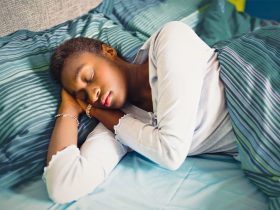Hair is often intertwined with identity, confidence, and femininity. So, when you start noticing more strands in your brush, a wider part, or less volume overall, it can be deeply unsettling. You are not alone. Hair thinning and loss (known medically as alopecia) affects millions of women worldwide. While the market is flooded with quick fixes and miracle cures, a sustainable approach requires understanding the root cause and nurturing your hair from the inside out and the outside in. This guide explores the landscape of female hair thinning, offering a blend of evidence-based natural remedies, lifestyle adjustments, and crucial guidance on when to seek professional help. The journey to healthier hair begins with knowledge and compassion for yourself.
The Root of Your Hair Loss
Before you can effectively treat hair loss, you must understand what might be driving it. Hair growth is a complex cycle, and disruptions can come from numerous sources. Identifying the likely cause is the first step toward choosing the right remedies.
Hormonal Shifts (The Most Common Culprit):
-
Androgenetic Alopecia (Female Pattern Hair Loss): This is the leading cause of hair loss in women. It’s genetic and influenced by hormones, specifically androgens like dihydrotestosterone (DHT). DHT miniaturizes hair follicles, causing hairs to grow back thinner and shorter over time. It typically presents as a widening part while the frontal hairline is usually preserved.
-
Menopause and Perimenopause: Fluctuating and declining estrogen levels can lead to hair thinning. Estrogen is a hair-friendly hormone that helps keep hairs in their growth phase longer. As it decreases, the effects of androgens become more pronounced.
-
Postpartum Hair Loss: After childbirth, estrogen levels plummet dramatically. This causes a massive shift of hair follicles from the growing phase into the shedding phase (telogen effluvium). This shedding usually peaks around 3-4 months postpartum and often resolves on its own, but it can be startling.
Nutritional Deficiencies:
Your hair is a non-essential tissue, meaning your body will prioritize vital organs if nutrients are scarce. Common deficiencies linked to hair loss include:
-
Iron: Essential for producing hemoglobin, which carries oxygen to hair follicles.
-
Zinc: Crucial for hair tissue growth and repair.
-
B Vitamins (especially Biotin B7 and B12): Play a key role in energy production and the creation of red blood cells that supply the scalp.
-
Vitamin D: believed to help create new hair follicles.
-
Protein: Hair is made almost entirely of a protein called keratin. Inadequate protein intake can directly lead to hair weakening and loss.
Stress and Trauma (Telogen Effluvium):
This is a temporary but dramatic form of hair loss triggered by a significant physical or emotional stressor. The shock pushes a large number of hair follicles into the resting phase prematurely. 2-3 months later, major shedding occurs. Triggers can include:
-
Major surgery, illness, or high fever
-
Severe emotional distress (grief, divorce, anxiety)
-
Crash dieting or rapid weight loss
-
Certain medications
Scalp Health and Underlying Conditions:
-
Scalp Conditions: Psoriasis, seborrheic dermatitis (dandruff), and fungal infections can create inflammation that obstructs the follicle and impedes healthy growth.
-
Thyroid Disorders: Both an underactive (hypothyroidism) and overactive (hyperthyroidism) thyroid can disrupt the hair growth cycle.
-
Autoimmune Diseases: Alopecia areata is an autoimmune condition where the body’s immune system attacks hair follicles, causing sudden, patchy hair loss.
14 Hair Loss Treatments and Remedies
Addressing hair thinning is a multi-faceted endeavor. The most effective approach combines internal nutrition, topical treatments, and gentle hair care practices.
Internal Remedies: Nourish from Within
1. Optimize Your Diet:
-
Prioritize Protein: Ensure you’re eating enough high-quality protein like eggs, fish, chicken, lentils, beans, and tofu.
-
Eat the Rainbow: Consume a variety of fruits and vegetables for their antioxidants, which fight oxidative stress that can damage follicles.
-
Healthy Fats: Omega-3 fatty acids (found in fatty fish, walnuts, chia seeds, and flaxseeds) reduce inflammation and support scalp health.
-
Iron-Rich Foods: Incorporate spinach, lentils, red meat (in moderation), pumpkin seeds, and fortified cereals.
2. Targeted Supplementation:
-
Note: Always consult a doctor before starting new supplements, especially to avoid megadoses that can be harmful.
-
Collagen Peptides: May provide amino acids that are the building blocks of hair.
-
Biotin: While deficiency is rare, supplementing can improve hair growth in those who are deficient.
-
Vitamin D: Many people are deficient, and correcting this can create a better environment for growth.
-
Saw Palmetto: A herbal supplement thought to help block the conversion of testosterone to DHT, though more research is needed for women.
-
Adaptogenic Herbs: Ashwagandha and holy basil may help the body manage cortisol levels, potentially mitigating stress-related hair loss.
3. Lifestyle Modifications:
-
Stress Management: This is non-negotiable. Incorporate yoga, meditation, daily walks, deep breathing, or whatever helps you decompress. Lowering cortisol is key.
-
Prioritize Sleep: Aim for 7-8 hours of quality sleep per night. This is when your body repairs itself, including hair follicles.
-
Stay Hydrated: Dehydration affects all cellular processes, including hair growth.
Topical Remedies: Soothe and Stimulate the Scalp
4. Rosemary Essential Oil:
Multiple studies, including one comparing it to minoxidil (Rogaine), have found rosemary oil to be effective in treating androgenetic alopecia. It is thought to improve circulation to the scalp and have anti-inflammatory properties.
-
How to use: Always dilute with a carrier oil (like jojoba or coconut oil). Add 3-5 drops of rosemary oil to a tablespoon of carrier oil. Massage into the scalp for 5-10 minutes. Leave on for at least 30 minutes before washing out. Perform a patch test first.
5. Peppermint Essential Oil:
Research, primarily in animals, has shown it can promote hair growth by increasing circulation and creating a cooling, tingling effect.
-
How to use: Dilute similarly to rosemary oil (3-5 drops per tablespoon of carrier oil).
6. Scalp Massage:
Massaging your scalp daily for just 5-10 minutes with or without oil can increase blood flow, deliver oxygen and nutrients to the follicles, and help reduce stress.
7. Onion Juice:
Though the smell is potent, studies have shown promising results for patchy alopecia areata. Its high sulfur content is believed to boost collagen production and fight inflammation.
-
How to use: Apply fresh juice to the scalp, leave on for 15-30 minutes, then shampoo thoroughly.
8. Aloe Vera:
Its soothing, anti-inflammatory, and moisturizing properties can help unclog hair follicles blocked by excess oil and reduce dandruff.
-
How to use: Apply pure aloe vera gel directly to the scalp, leave on for 30 minutes, then rinse.
Gentle Hair Care Practices
9. Avoid Harsh Styling:
-
Heat Styling: Give your hair a break from flat irons, curling wands, and blow dryers on high heat.
-
Tight Hairstyles: Ponytails, braids, and buns that pull tightly can cause traction alopecia, a permanent form of hair loss.
-
Chemical Processing: Be cautious with relaxers, perms, and bleach, which can weaken the hair shaft and cause breakage.
10. Choose the Right Products:
-
Mild Shampoos: Use sulfate-free shampoos that gently cleanse without stripping natural oils.
-
Avoid Silicones Heavy: While they smooth, some silicones can build up on the scalp and follicle, potentially hindering health.
11. Use a Silk or Satin Pillowcase:
This creates less friction than cotton while you sleep, reducing breakage and helping to prevent tangles.
12. Consider Low-Level Light Therapy (LLLT):
Devices like laser caps and combs use red light to stimulate cellular activity in the follicles. This FDA-cleared treatment is shown to be effective for both men and women and can be done at home.
13. Rice Water Rinses:
A traditional remedy, fermented rice water contains amino acids, vitamins, and minerals that are believed to strengthen hair, reduce surface friction, and add shine.
14. Green Tea Rinses:
Green tea is rich in antioxidants. Applying cooled green tea to the scalp may help block DHT and reduce inflammation.
Talk With Your Doc
While natural remedies are powerful, self-diagnosing can be risky. It is absolutely essential to consult a healthcare professional to rule out serious underlying conditions. See a dermatologist or a trichologist (a hair and scalp specialist) if:
-
Your hair loss is sudden or occurs in patches.
-
You are experiencing burning, itching, or pain on your scalp.
-
You have other symptoms like fatigue, weight changes, or irregular periods (pointing to thyroid or hormonal issues).
-
You are losing hair rapidly after starting a new medication.
-
Your natural efforts aren’t yielding results after 6-9 months.
What to Expect: Your doctor may run blood tests to check your iron/ferritin levels, thyroid hormones (TSH), vitamin D, and sex hormones. This data is invaluable and will guide a targeted, effective treatment plan, which may include prescription treatments like minoxidil, spironolactone, or others in conjunction with your natural routine.
Loving What You Got
The emotional toll of hair thinning is real. While you work on regrowth, it’s vital to nurture your self-esteem.
-
Get a Great Cut: A skilled stylist can create a cut that adds volume, layers, and movement, making hair look instantly thicker and fuller.
-
Play with Color: Strategic highlights or lowlights can add dimension and the illusion of depth, camouflaging a widening part.
-
Embrace Volumizing Products: Root-lifting sprays, mousses, and texturizing powders can work wonders for day-to-day volume.
-
Accessorize: Headbands, scarves, and clips are not just functional; they’re stylish and can draw attention away from thinning areas.
-
Consider Fibers or Toppers: Cosmetic keratin fibers (like Toppik) magnetically cling to existing hair, making thinning spots vanish. For more significant loss, a hair topper can be a life-changing solution, offering instant volume and coverage.
-
Practice Self-Compassion: Your worth is not measured by your hair. Talk to yourself kindly, connect with support groups online, and remember that you are so much more than your hair. This journey is as much about inner strength as it is about outer growth.
Conclusion
Navigating women’s hair thinning requires a blend of detective work, patience, and a holistic approach. There is no single magic bullet. By understanding the potential root causes, diligently applying a combination of internal and external natural remedies, partnering with a doctor for a definitive diagnosis, and practicing radical self-love, you can take back control. Healthier, fuller hair is a worthy goal, but the ultimate victory lies in cultivating unshakable confidence from the inside out.














Leave a Reply
View Comments